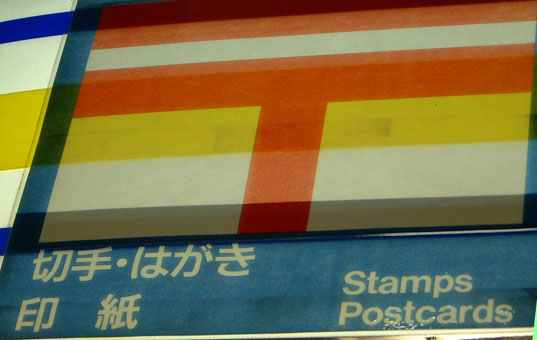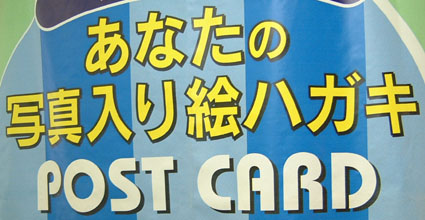Ha-gakiHa-gaki is a native Japanese word, composed of ha meaning 'leaf, page', and -gaki from the verb kaku 'to write'. The meaning is 'postcard'. Ha-gaki can be written in Chinese characters as 葉書, but hiragana はがき is very commonly used, for example in the following sign, found above a kiosk in a railway station:
Even katakana can be found, as in the following advertising sign:
A Google search in August 2003 also revealed that hiragana and katakana are both in more common use than Chinese characters, at least on the Internet.
The aversion to Chinese characters, which require a large number of strokes to write, is understandable. It is perhaps somewhat surprising that katakana is more common than hiragana for what is quite clearly a native Japanese word. The motivation for using katakana is possibly a desire to give the word greater 'standout'. Since hiragana is used for grammatical particles and 'empty' parts of speech, hagaki written in hiragana tends to melt into the surrounding text. Katakana helps give the word a clearer visual identity. |
| Previous Next |

